Nature is all around us. Plants, animals, soil, air and water inhabit and animate our daily lives, whether you live in the country or in the city.
We are invigorated by nature. We are inspired by its creatures, their beauty, and their existential meaning. We depend on nature’s services and what they provide. We long for connection to nature, whether we are aware of this or not. Nature can represent metaphors for a “good life,” or for health, but also danger, “the wild,” and the un-domesticated. Animals have personality and images of them can convey ideas and emotions beyond their own existence. There are social ideas and controversies around the environment that inspire heated debate in conservation, climate change, and justice.
“This is the nature of graffiti. It facilitates speech. It speaks to us. It stakes claims and makes statements. It tells stories.”
We are part of nature, so it’s no surprise that nature is ubiquitous in art, from formal “indoor art” to outdoor murals and graffiti. These last two forms are the subject of a new collection of images and discussion curated by The Nature of Cities: “Up Against the Wall: A Gallery of Nature-Themed Graffiti and Street Art.” You can see the growing collection here.
And you can contribute to it, too: we’re just getting started, but we intend this gallery to be an evolving, crowd-sourced collection—a source of ideas, agitation and inspiration for creative place-making that is beyond the formal and sanctioned. We also hope this site will be a place where both artists and communities might merge to talk about the people-nature connection in outdoor art, a convening space where we can explore the meaning of graffiti and the nature of public space and creative place-making.
Graffiti has a multifaceted and sometimes controversial place in the urban landscape. Some say:
Graffiti reflects underlying decay and lawlessness, and is a menace to social order.
Others say:
Graffiti fulfills many important social functions, including making social commentary, claiming on space, and creating interesting public places.
Or maybe both. It is one of the few truly spontaneous elements in many urban landscapes.
Graffiti, revered and loathed by turn, provides insights into societal attitudes and perceptions. Whether for protest, art, comment or signaling, as a sometimes (but not always) illegal activity, graffiti can confront hegemony, saying what those in power don’t want to hear, or what isn’t part of the “mainstream” dialogue. However, sometimes it can support hegemony, such as politicians in 1980s Brazil and Argentina paying locals to paint covert political slogans. World War II histories contain many examples of Nazi graffiti. Paul Downton was inspired by a corporate advertisement masquerading as stenciled graffiti to write a TNOC essay about how public space can be covertly coopted.
These are the facts of graffiti and street art, and represent some of their many dualities: decay vs. renewal; illegal vs legal; ugly vs. beautiful; innovative vs. crass; overt vs. covert; inside vs. outside.
So what is graffiti and street art saying? What can it say? Some people view it as ‘out of place,’ deviant, symbolizing disorder and moral panic. On the other hand, as art that is created and experienced out in public spaces, graffiti and street art can be used to assert a claim to a particular place, in a sense create it—a territorial marker for the artist and all those they aim to represent. Graffiti also blurs the boundaries between private space (the buildings it is often painted on) and public (the visibility of graffiti from public places). At its best, graffiti can challenge dominant discourses and politics and communicate alternative, disruptive meaning. Street art, graffiti’s somewhat more formal cousin, can serve similar roles in creative place-making, especially when such art is inspired and commissioned by and for local communities.
Graffiti and street art styles are as diverse as their subject matter—tags, throw-ups, stencils, stickers, wildstyle, piece, blockbuster, murals, and more. In our gallery, we are interested in examples of all styles of graffiti and street art (broadly defined) that include themes from nature (also very broadly defined), or that have some element of ‘nature’ in their content, for whatever purpose. Nature-themed graffiti may relate to many issues in society, such as: (1) how we define and understand nature (e.g., a rural or agrarian ideal, wilderness); (2) political statements of all kinds, including but not limited to those addressing conservation or the environment; (3) comments on what is missing or needed in the city; (4) simple depictions of beauty; and (5) use of nature elements as tags or as messages that don’t involve the environment.
Pippin Anderson sowed the seed for this collection in her essay for TNOC on nature-themed graffiti in Cape Town. It turns out that there is a lot of graffiti and street art around the world that includes elements of nature. Examples illustrate stories and purposes that are rich, diverse, illuminating and provocative. We mention a few here, but there are more than 100 at the gallery, with more being added every week.
Already in the gallery, you can find pictures of nature’s place in our urban world, messages about environmental protection and images of cities as counter to a rural idyll. See, for example, the large mural in Barrio 13 in Medellín, Colombia—near the famous escalators that help people navigate the steep hillside community—depicting a scene of rural idyll. Perhaps these are offered in contrast to a difficult urban existence. There are scenes of mystery and beauty on dismal walls needing the remediation that natural images can provide. Contemplate the large (over 25 meters) image of Pumas stalking across a wall, also in Medellín. There is evocative graffiti of a vine growing out of a woman’s head in Cape Town, perhaps titled “Nature on my mind.” In Portland, Mike Houck commissioned the largest community mural in North America: over 55,000 square feet depicting an array of local birds.


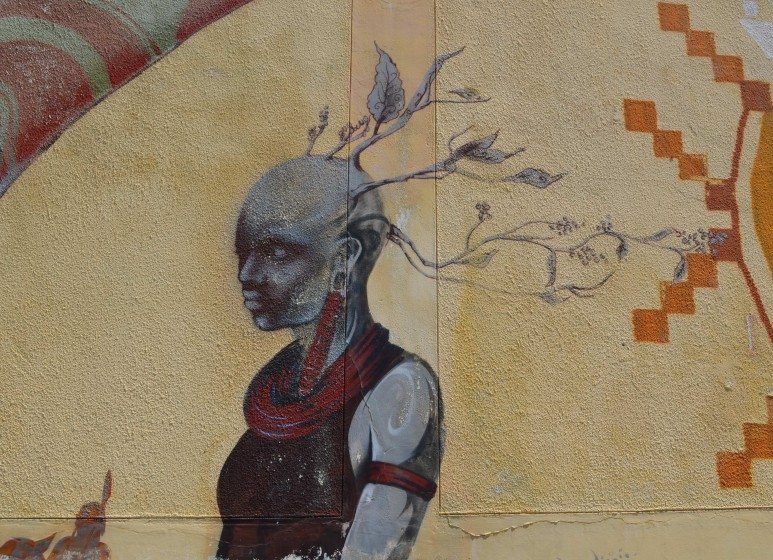
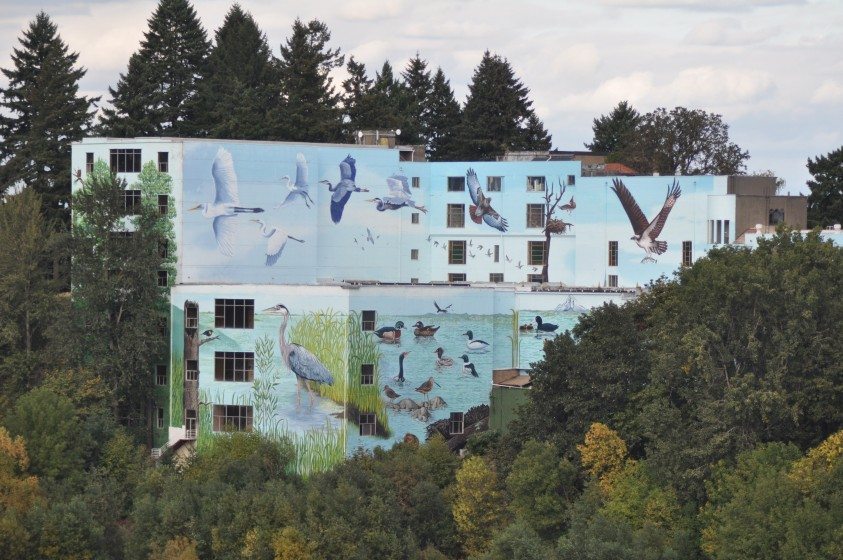
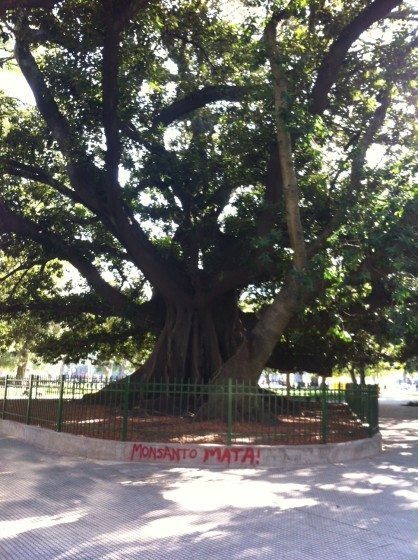
There are calls to action, including for conservation causes and environmental controversies, but also scenes memorializing victims of violence.
There are statements of concern about the corporate role in environmental degradation and food security (for example, “Monsanto Mata,” or “Monsanto kills,” in a fancy downtown Buenos Aires park), or complaints about the obscure politics of environmentally and socially destructive infrastructure.
One such image is refers to a large and controversial dam—the Belo Monte dam—on a tributary of the Amazon River that has destroyed forest, displaced indigenous people and only produced a modest, less-than-promised amount of hydropower (“Belo Monte de Mentiras,” or “Belo Monte lies,” in Altamira, Brazil).
In Australia, a helpful stencil reports that “your children’s future is a fantasy, but thanks for the rock and roll.”


Conservation images and wildlife abound in Cape Town, such as a graffiti image of how few Rothschild Giraffes remain in the wild.
A young boy has the world in his hands in Barcelona, but that same world is a ticking time bomb in Cape Town.
There is a giant fanciful flying fish dinosaur skeleton—if that’s what it is—in Montreal.
And someone is fishing for birds in a parking lot in Panama City, Panama.
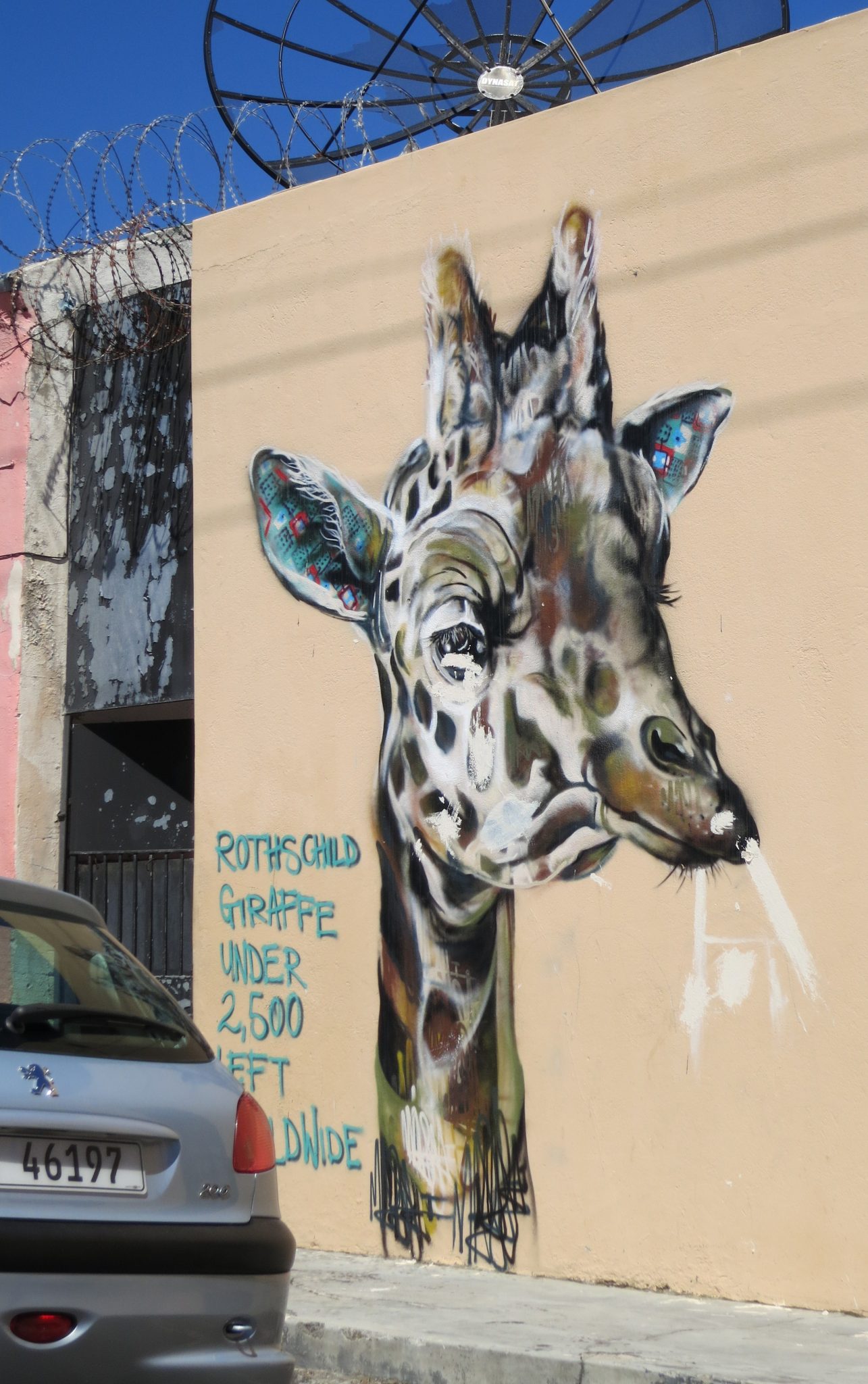

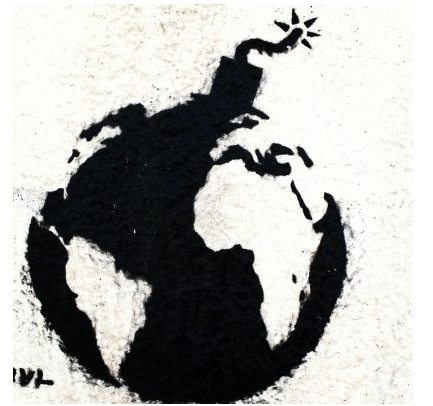
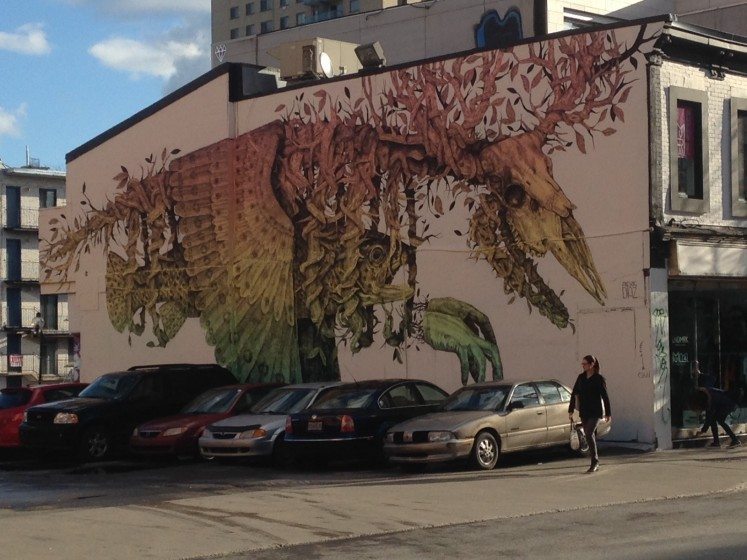
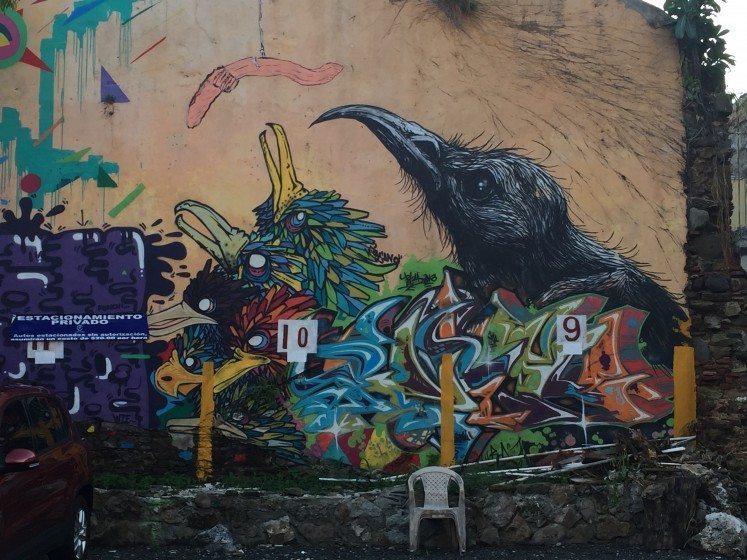
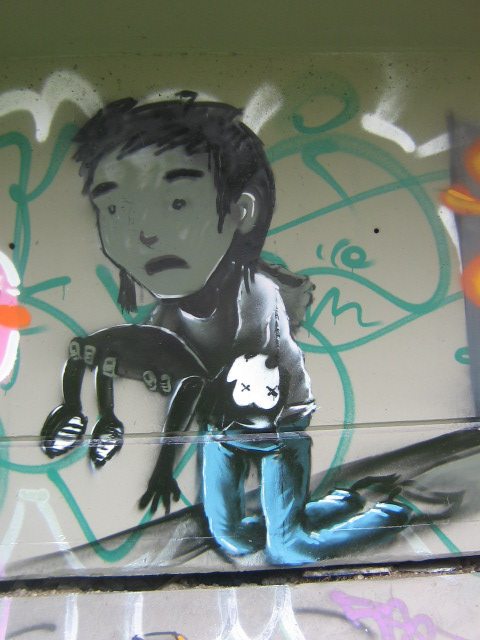
Often, nature images are used to make points unrelated to the environment. Or maybe they are just part of the artist’s tag image. Or both.
For example, a well-known and influential graffiti artist, Tripido, was murdered by the police in Bogotá in 2015. A policeman is now serving jail time, with others under investigation. Tripido’s tag was a Felix the Cat. You can see many memorials to him—Felix the Cats—around Bogotá.
In the 12th Century, someone, perhaps a Templar knight, scratched a pelican in a castle wall to symbolize his devotion to Christianity—at that time Pelicans were symbols of the nurturing quality of the faith.
Maybe the Angel Cat along the famous High Line park in New York City is simply a memorial to a lost pet.
Who knows what the penguin in the life preserver is doing? Perhaps she is preparing to be cast out to sea after her ice flow melts into an ocean inexorably warming around her.
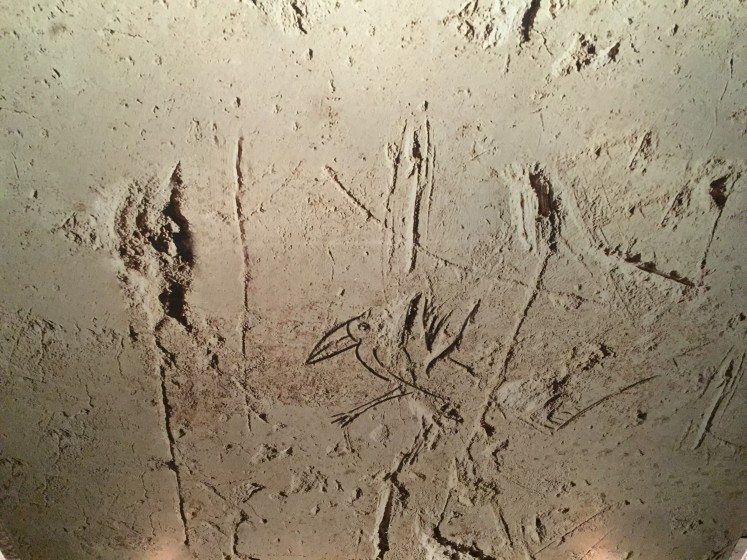

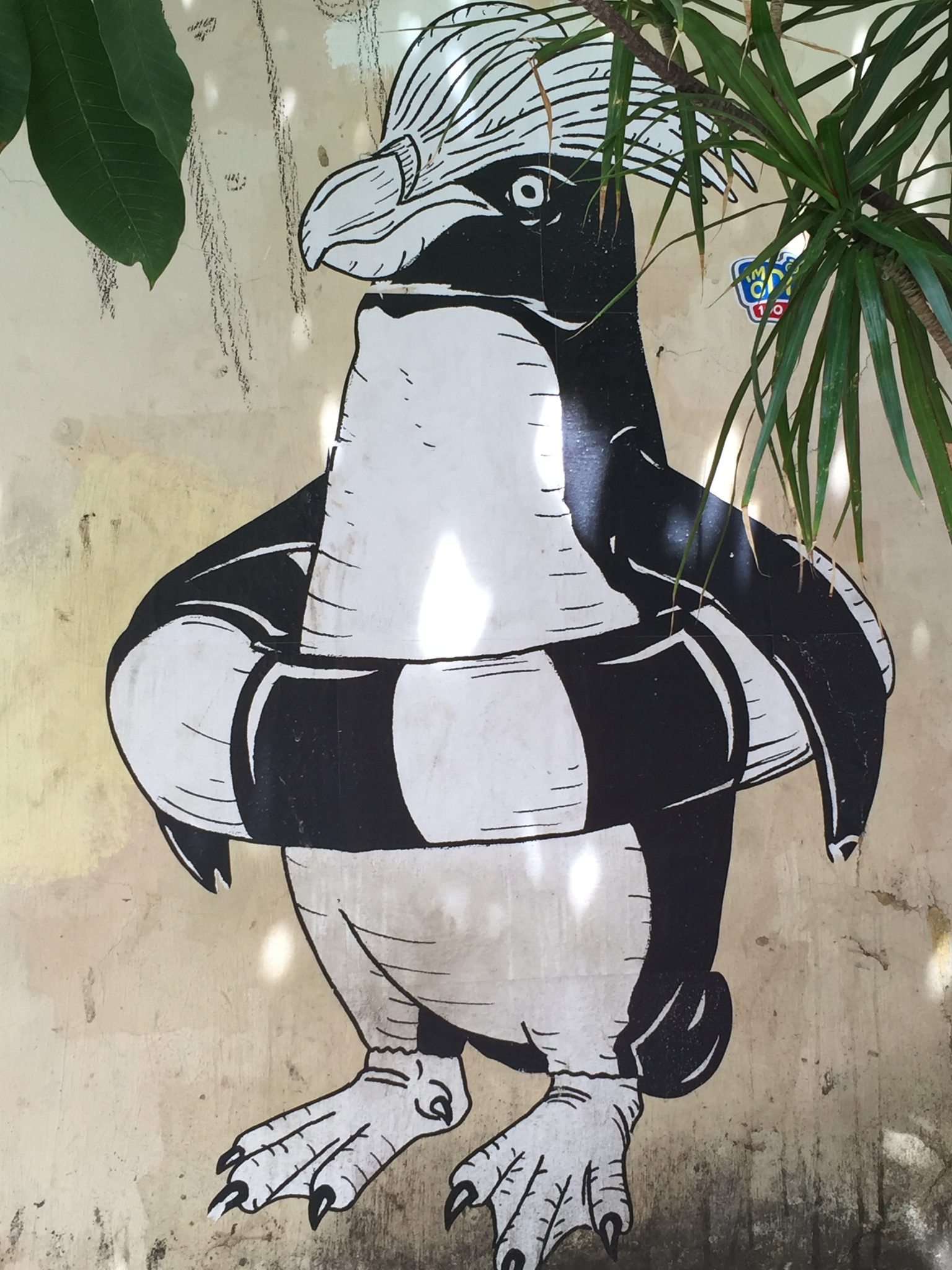
This is The Nature of Graffiti. It facilitates speech. It speaks to us. It stakes claims and makes statements. It tells stories.
We ought to listen to people about their perceptions and views on nature in cities, in order that we better promote the idea and value of nature in cities. In that rich vein, what does this graffiti tell us? It tells us there are voices of dissent out there, personal views not always captured by popular media or acted on by city managers or private developers. It tells us that that there are non-standard urban forms, and a desire for more nature, both in cities and beyond cities. It tells us that in even the most overwhelmingly urban environments, human beings are determined to find a way to express our connection with the rest of the living world. There’s a desire to tell personal stories as a form of creative and alternative place-making. Among all the individual stories embedded in these examples of graffiti and street start, there are larger, synthetic stories about society.
We hope that many will collaborate with us in creating this collection. Check it out. And when you see nature-themed graffiti or murals out on the street, take a picture, share it by uploading it, and leave a story about it location, context, and meaning to you. Artists too are invited to put their own work up. By gathering examples of such graffiti in cities globally, we aim to facilitate exploration of some interesting questions: What are examples of urban nature-themed graffiti around the world? What does it tell us about the nature of and in cities? What might stories we find in graffiti art tell us about urban (and rural) stories? How are people using nature to claim public spaces?
Join us.
David Maddox, Pippin Anderson, Paul Downton, Emilio Fantin, Germán Eliecer Gomez, Julie Goodness, Mike Houck, Todd Lester, Patrick Lydon, Patrice Milillo, Laura Shillington
New York, Cape Town, Adelaide, Bologna, Bogotá, Stockholm, Portland, Säo Paulo, Seoul/San Jose, Los Angeles, Managua/Montreal
About Paul Downton
Founding convener of Urban Ecology Australia and a recognised ‘ecocity pioneer’, Paul was co-convener, with Chérie Hoyle, of ‘EcoCity 2, the Second International EcoCity Conference’ held in Adelaide, Australia in April 1992. His current biophilic ecocitologizing is directed through the nascent vehicle of the Ecocity Design Institute. Formed with Sharon Ede and Chérie Hoyle, EDI aims to get on-line courses on ‘making ecocities’ running during 2017.
- Web |
- More Posts (1)
About Mike Houck
Mike Houck, Director of the Urban Greenspaces Institute (http://www.urbangreenspaces.org), has worked on local, regional, and national urban park and greenspace issues since 1980 when he founded the Urban Naturalist Program at the Audubon Society of Portland (http://www.audubonportland.org). He is co-founder of The Intertwine Alliance http://www.theintertwine.org), which is dedicated to creating a world-class park, trail, and natural area system for the Portland-Vancouver metropolitan region. The Alliance is also a member of the national Metropolitan Greenspaces Alliance whose members represent Chicago, Los Angeles, Houston, Cleveland, Milwaukee, San Francisco Bay Area, and Portland metropolitan greenspace initiatives.
- Web |
- More Posts (1)



Graffiti is a self assertion, by those who cannot afford to pay for advertising in public spaces. It counters the corporate takeover of our publicly visible surfaces that assaults our senses inescapably.
En las sociedades modernas se “naturaliza” el mercado y su difusión comercial en imagenes de todo tipo y sin ningún criterio estético. No obstante solo el grafiti se persigue como afectación del espacio publico, por lo menos desde la opinión publica.